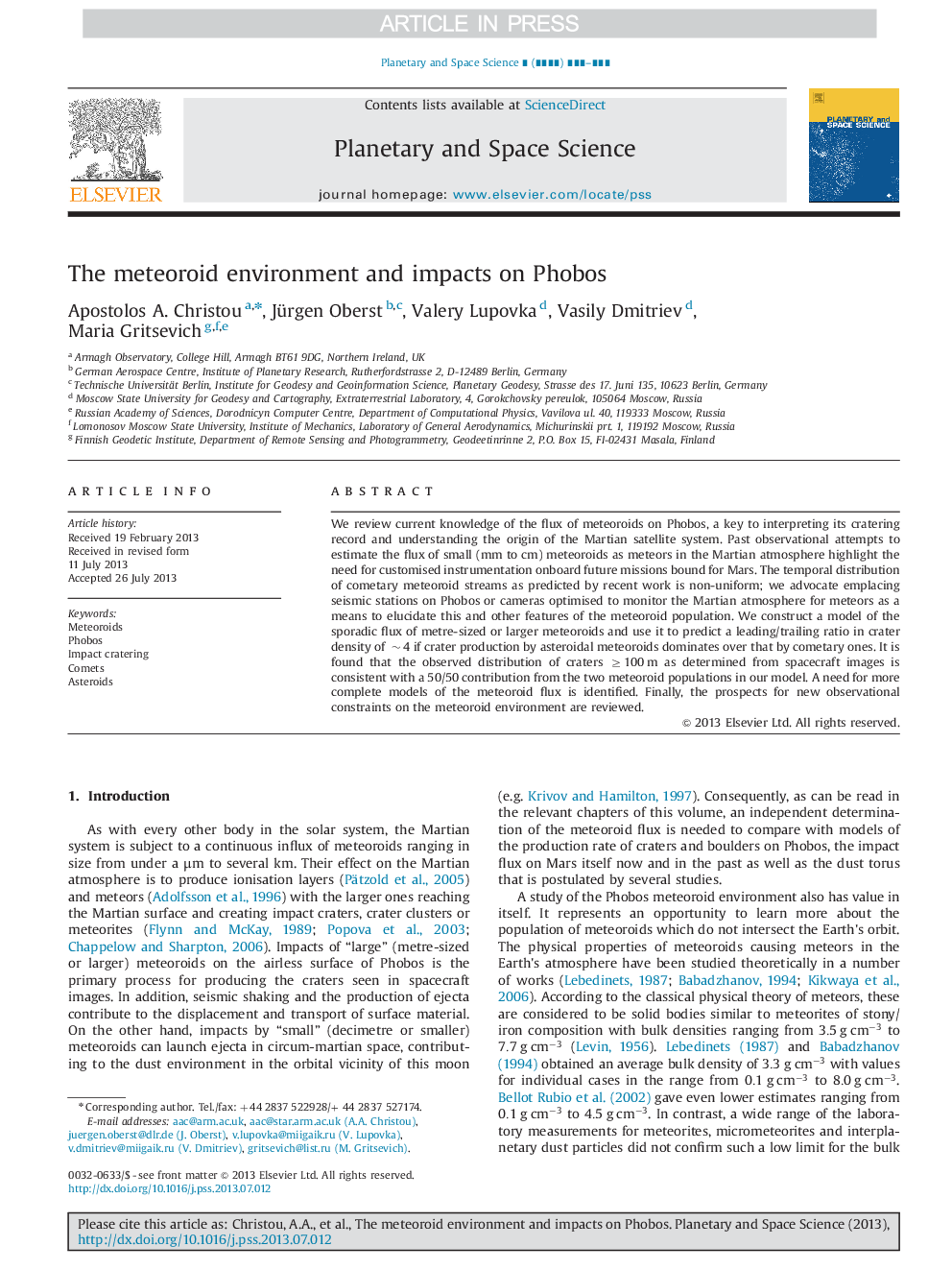| Article ID | Journal | Published Year | Pages | File Type |
|---|---|---|---|---|
| 8143644 | Planetary and Space Science | 2014 | 7 Pages |
Abstract
We review current knowledge of the flux of meteoroids on Phobos, a key to interpreting its cratering record and understanding the origin of the Martian satellite system. Past observational attempts to estimate the flux of small (mm to cm) meteoroids as meteors in the Martian atmosphere highlight the need for customised instrumentation onboard future missions bound for Mars. The temporal distribution of cometary meteoroid streams as predicted by recent work is non-uniform; we advocate emplacing seismic stations on Phobos or cameras optimised to monitor the Martian atmosphere for meteors as a means to elucidate this and other features of the meteoroid population. We construct a model of the sporadic flux of metre-sized or larger meteoroids and use it to predict a leading/trailing ratio in crater density of ~4 if crater production by asteroidal meteoroids dominates over that by cometary ones. It is found that the observed distribution of craters â¥100m as determined from spacecraft images is consistent with a 50/50 contribution from the two meteoroid populations in our model. A need for more complete models of the meteoroid flux is identified. Finally, the prospects for new observational constraints on the meteoroid environment are reviewed.
Related Topics
Physical Sciences and Engineering
Earth and Planetary Sciences
Geophysics
Authors
Apostolos A. Christou, Jürgen Oberst, Valery Lupovka, Vasily Dmitriev, Maria Gritsevich,
